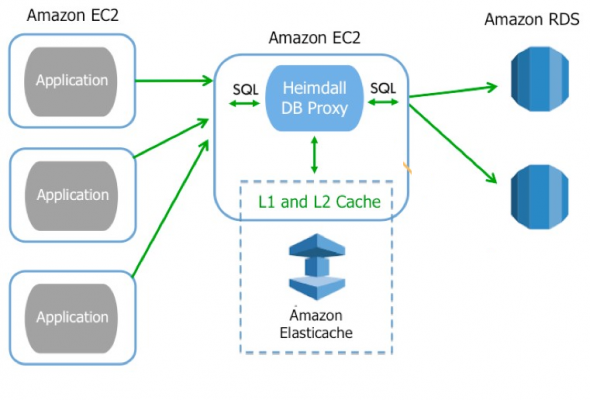- Expands to Relational Database Service
- Eliminates much of relational database management
- Can be scaled independently
- CPU
- memory
- storage
- IOPS
- AWS manages
- backups
- software patching
- automatic failure detection
- recovery
- Can trigger, manual or automated backups
- It provides high availability with primary instance which if fails, switch to secondary instance
- Has a soft limit of 40 Amazon RDS DB instances per account
- From 40, up to 10 can be Oracle or Microsoft SQL Server DB instances under the License Included model.
- Customers can Bring Your Own License (BYOL) model to have all 40 DB instances for Oracle or Microsoft SQL Server
- Supports database engines
- MySQL
- MariaDB
- PostgreSQL
- Oracle
- Microsoft SQL Server
- MySQL-compatible Amazon Aurora
- AWS IAM controls AWS resources access to Amazon RDS databases.
- For security
- put database in an Amazon Virtual Private Cloud (Amazon VPC)
- using Secure Sockets Layer (SSL) for data in transit
- Using encryption for data at rest
- RDS APIs and the AWS Management Console provide a management interface that allows you to create, delete, modify, and terminate RDS DB instances; to create DB snapshots; and to perform point-in-time restores
- There is no AWS data API for Amazon RDS.
- Once a database is created, RDS provides a DNS endpoint for the database which can be used to connect to the database.
- Endpoint does not change over the lifetime of the instance even during the failover in case of Multi-AZ configuration
- RDS leverages Amazon EBS volumes as its data store
- RDS provides database backups, which are replicated across multiple AZ’s
- RDS Multi AZ’s feature synchronously replicate data between a primary RDS DB instance and a standby instance in another Availability Zone, which prevents data loss,
- RDS provides a DNS endpoint and in case of an failure on the primary, it automatically fails over to the standby instance
- RDS also allows Read replicas for the supported databases, which are replicated asynchronously
- RDS Provisioned IOPS, where the IOPS can be specified when the instance is launched and is guaranteed over the life of the instance
AWS RDS limits per region
| Resource | Default Limit |
| Cross-region snapshots copy requests | 5 |
| DB Instances | 40 |
| Event subscriptions | 20 |
| Manual snapshots | 100 |
| Option groups | 20 |
| Parameter groups | 50 |
| Read replicas per master | 5 |
| Reserved instances | 40 |
| Rules per DB security group | 20 |
| Rules per VPC security group | 50 inbound 50 outbound |
| DB Security groups | 25 |
| VPC Security groups | 5 |
| Subnet groups | 50 |
| Subnets per subnet group | 20 |
| Tags per resource | 50 |
| Total storage for all DB instances | 100 TiB |

Are you an AWS SysOps Administrator Associate?Take a Quiz
